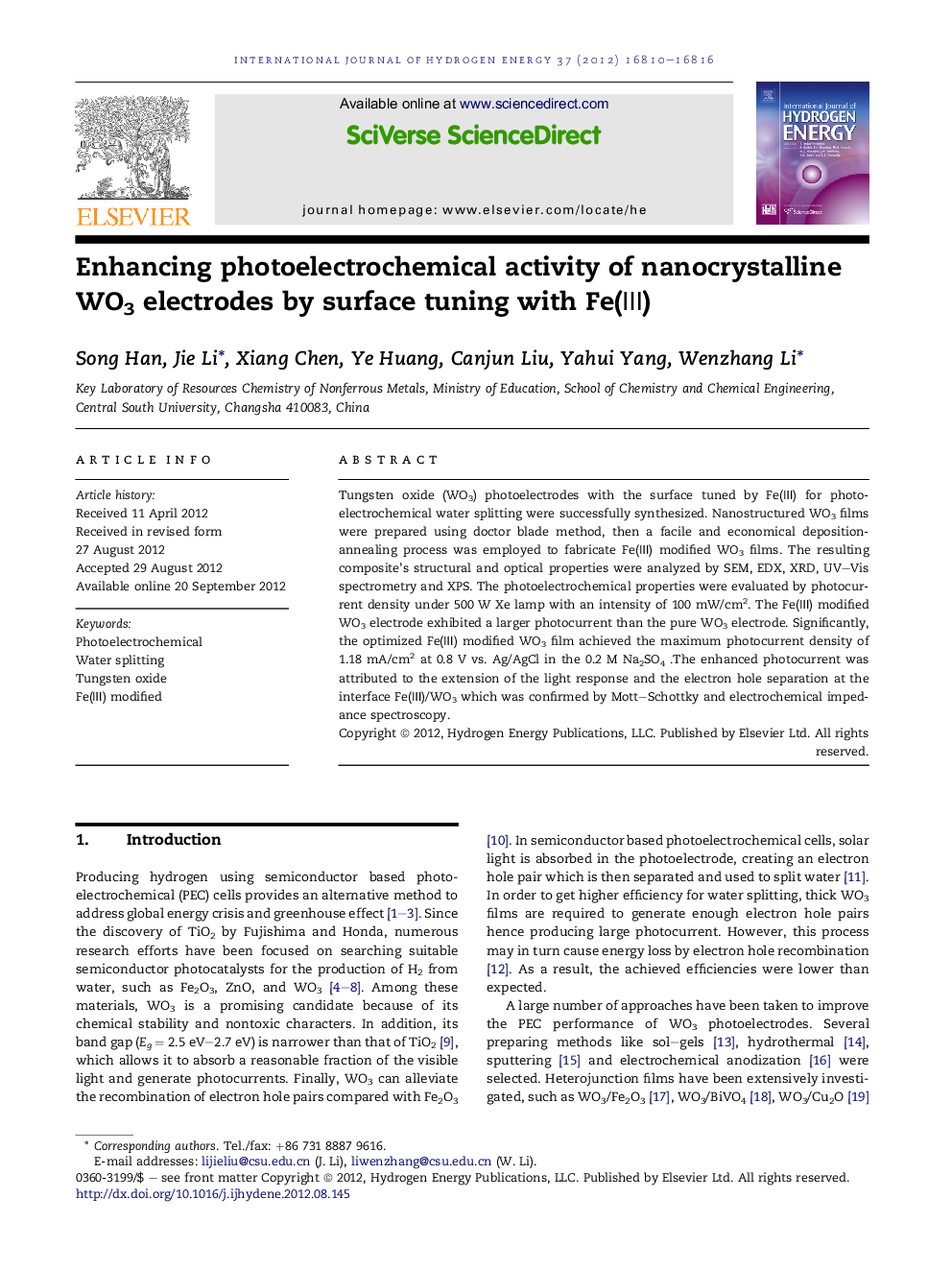| Article ID | Journal | Published Year | Pages | File Type |
|---|---|---|---|---|
| 1270861 | International Journal of Hydrogen Energy | 2012 | 7 Pages |
Tungsten oxide (WO3) photoelectrodes with the surface tuned by Fe(Ⅲ) for photoelectrochemical water splitting were successfully synthesized. Nanostructured WO3 films were prepared using doctor blade method, then a facile and economical deposition-annealing process was employed to fabricate Fe(Ⅲ) modified WO3 films. The resulting composite's structural and optical properties were analyzed by SEM, EDX, XRD, UV–Vis spectrometry and XPS. The photoelectrochemical properties were evaluated by photocurrent density under 500 W Xe lamp with an intensity of 100 mW/cm2. The Fe(Ⅲ) modified WO3 electrode exhibited a larger photocurrent than the pure WO3 electrode. Significantly, the optimized Fe(Ⅲ) modified WO3 film achieved the maximum photocurrent density of 1.18 mA/cm2 at 0.8 V vs. Ag/AgCl in the 0.2 M Na2SO4. The enhanced photocurrent was attributed to the extension of the light response and the electron hole separation at the interface Fe(Ⅲ)/WO3 which was confirmed by Mott–Schottky and electrochemical impedance spectroscopy.
► WO3 electrodes by surface tuning with Fe(Ⅲ) were fabricated. ► Original morphologies of WO3 electrodes are not changed. ► 80% increase in photoelectrochemical water splitting reaction. ► Fe(Ⅲ) helps hole electron separation.
